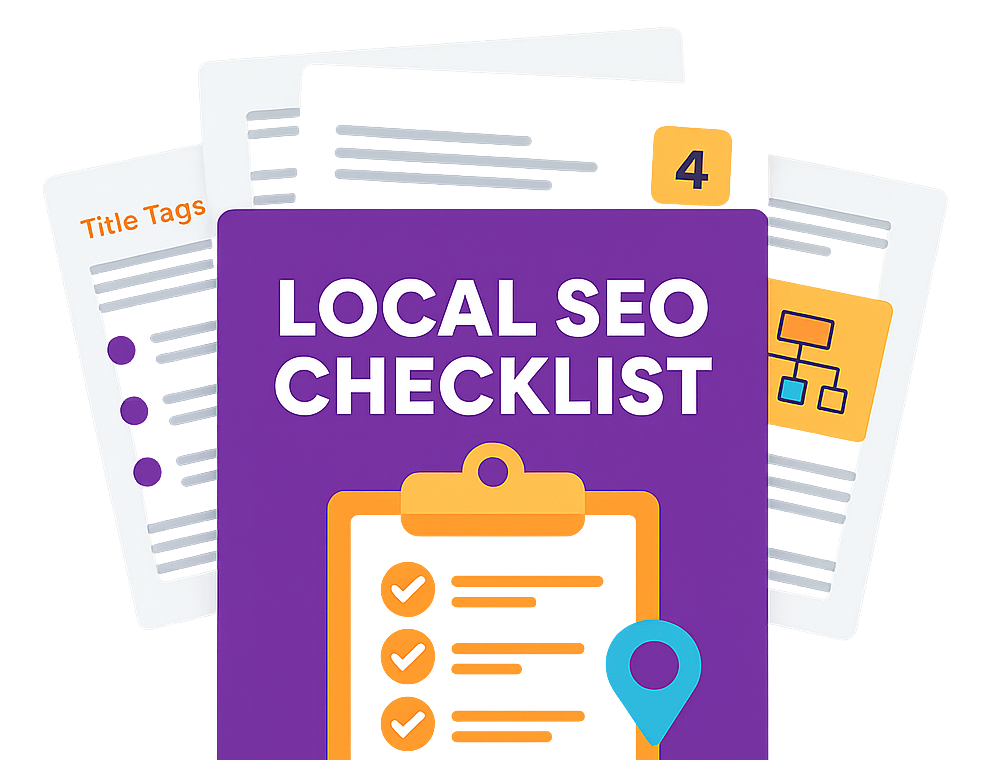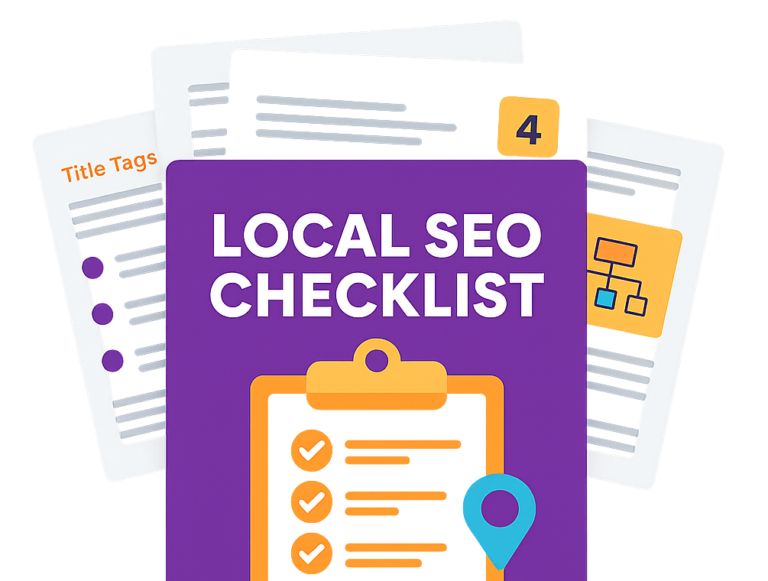That sinking feeling when a one-star review pops up on your Google Business Profile is all too familiar for UK business owners. It’s easy to react emotionally, but a calm, strategic approach is far more effective. Your first instinct shouldn't be to fire off a defensive reply or panic.
Instead, take a moment to pause and analyse the situation. The big question is: does this review actually break any of Google's rules?
Analyse the Review for Policy Violations
Before you do anything else, you need to figure out if the review even qualifies for removal. A review being negative, unfair, or even factually wrong often isn't enough to get it taken down. Google protects free expression, even when it's critical of a business.
What you're looking for are clear violations of Google's content policies. A legitimate complaint, no matter how harsh it feels, will almost certainly stay up. Look for things like:
- Spam or Fake Content: Reviews that are obviously not from a real customer. Think bots, fake accounts, or content designed purely to manipulate your rating.
- Conflict of Interest: Feedback from a current or former employee, or even a direct competitor trying to sabotage your profile.
- Off-Topic Ranting: Content that has nothing to do with an experience at your business but is instead a rant about social or political issues.
- Harassment or Hate Speech: Reviews that include personal attacks, threats, or offensive language aimed at you, your staff, or any protected group.
This simple decision tree breaks down your initial choice.

As the graphic shows, there are really only two paths forward. Picking the right one from the start will save you a lot of time and hassle. Beyond just reacting, learning some effective strategies for dealing with customer complaints can help prevent negative reviews in the first place and turn unhappy customers into loyal ones.
Deciding Your Next Move A Review Action Plan
To make the decision-making process a bit clearer, here’s a quick guide to help you decide whether to flag a review for removal or respond to it directly based on its content.
| Type of Review Content | Recommended Action | Reasoning |
|---|---|---|
| Contains personal attacks, profanity, or discriminatory language | Flag for Removal | This is a clear violation of Google’s Prohibited Content policies and has a high chance of being removed. |
| Posted by a competitor or a disgruntled ex-employee | Flag for Removal | This represents a conflict of interest, another direct policy violation that Google takes seriously. |
| A genuine customer complaint, even if it feels unfair | Respond Professionally | This review will likely not be removed. Your best action is to show other potential customers that you handle feedback constructively. |
| The review is completely off-topic or irrelevant | Flag for Removal | If the content has no connection to an experience with your business, it does not meet Google's contribution guidelines. |
Ultimately, your goal here is to protect your business’s hard-earned reputation. This whole process, while it can be frustrating, is a crucial part of your overall SEO strategy. For small businesses looking to get ahead, looking into https://www.bare-digital.com/affordable-seo-services-for-small-business/ can provide the expert support needed to navigate these kinds of challenges.
Flagging Reviews That Don't Play by Google's Rules
Here’s the hard truth: you can’t get a negative review removed just because you disagree with it. Success isn't about proving a customer wrong; it's about proving the review breaks Google's own rules. A review that’s negative but legitimate—even if it feels unfair—is almost certainly staying put.
So, your first job is to get intimately familiar with what Google actually considers a policy violation. The list goes way beyond just swearing. It covers a whole range of content designed to stop the system from being gamed. Nailing this part is everything.
How to Spot a Clear Policy Breach
Before you even think about hitting that "flag" button, you need to match the review to a specific rule. Simply flagging a review because it stings won't get you anywhere. Your report needs to point to a concrete violation to have any hope of being actioned by Google's moderators.
For UK businesses, some of the most common violations we see are:
- Conflict of Interest: This is a big one. A review left by a bitter ex-employee, a current staff member trying to boost ratings, or a direct competitor is a slam-dunk violation. Google is clear that reviews must be unbiased.
- Spam and Fake Content: This bucket covers anything not based on a real customer experience. Think bot accounts spamming generic one-star ratings or someone who has clearly never set foot in your business.
- Off-Topic Content: A review must be about a customer's experience with your business. If it spirals into a political rant, social commentary, or a personal attack that has nothing to do with their visit, it's off-topic and reportable.
- Harassment or Hate Speech: Any review containing direct threats, personal insults, or discriminatory language is strictly forbidden. These are usually the easiest and quickest to get removed.
Key Takeaway: Your entire strategy hinges on matching the review to a specific policy. Don't focus on what the review says, but how it violates the rules. A vague complaint isn’t a violation; a review from a competitor absolutely is.
Understanding this difference is critical. A review saying, "The service was slow and my coffee was cold," is a valid (though painful) opinion. But a review from "John Smith," who you know you fired last month, ranting about "terrible management," is a clear conflict of interest. That’s the level of detail you need.
The Right Way to Flag a Review
Once you’ve found a clear violation, the flagging process itself is pretty simple. You can do it right from your Google Business Profile dashboard or directly from the review on Google Search or Maps.
Here’s the step-by-step:
- Find the Review: Go to the review you need to report. You can find it in your Google Business Profile manager or by looking up your business on Google Maps.
- Find the Flag Option: Look for the three vertical dots next to the reviewer's name and click them.
- Report the Review: A small menu will pop up. Choose "Report review" (sometimes it says "Flag as inappropriate").
- Choose the Violation: This is the most important step. Google will show you a list of reasons. Pick the one that perfectly matches the violation you identified (e.g., "Conflict of interest," "Hate speech," "Spam").
- Submit Your Report: Once you've selected the right reason, hit submit. You’ll get a quick confirmation that Google has received it.
Choosing the correct violation type is non-negotiable. If a review is from a known competitor but also has a typo, flagging it for "Spelling and grammar" is a wasted effort. You must flag it for "Conflict of interest" to give the moderation team the right context.
The UK's Stricter Moderation Landscape
It's also important to realise that the game has changed in the UK. The Competition and Markets Authority (CMA) has put serious pressure on Google to get its house in order when it comes to fake reviews.
This has resulted in a much more robust system for tackling dodgy content. Official UK government announcements confirm that Google has rolled out a formal process to identify, block, and even penalise fake reviews, all stemming from CMA enforcement action. The new measures are proactive, slapping "warning" alerts on business profiles caught red-handed and bringing sanctions against both the businesses and the reviewers.
For you, this regulatory muscle means that while Google is tougher on fake positive reviews, there’s a stronger foundation for reporting genuinely fake or malicious negative ones. Your flagging efforts are now part of a much bigger, regulated system. When you align your report with Google's policies, you’re not just improving your chances of removal—you're helping to create a fairer online marketplace. This process is just one piece of the puzzle; understanding the top metrics to measure on-page SEO success shows how your online reputation directly impacts your overall digital health.
What to Do When Flagging a Review Fails

It’s one of the most frustrating moments for any UK business owner. You find a review that clearly breaks Google's rules, you follow the process to flag it, and days later you get that dreaded email: "Your request was not approved."
Many people hit this wall and assume it's the end of the line. But here’s something most don't realise: a rejected flag isn't a final "no." It's just the first step. You now have the opportunity to escalate your case and get a real human to look at it.
Your next move is to take your case directly to Google Business Profile (GBP) support. This is where you get to bypass the automated systems and present a detailed argument. Success at this stage comes down to how well you build your case.
This isn’t about venting your frustration or simply stating the review is unfair. It's about putting on your detective hat, gathering solid proof, and presenting it so clearly that a support agent can immediately see the policy violation.
Building Your Evidence-Based Appeal
When you open a support ticket, you’re asking for a manual re-evaluation. To make it count, you need to hand them a well-organised package of evidence that makes the policy breach impossible to ignore.
Think of it as preparing a small file for a court case. You need documents, context, and a clear, logical argument. Just saying "this person never used our service" won't cut it. You need to show them.
Here's what your evidence kit should contain:
- The Original Case ID: When you first flagged the review, Google sent you an email with a case ID. Always include this in your appeal. It proves you've followed the correct procedure and gives the support agent the history of your request.
- The Reviewer’s Name and a Link to the Review: Make their job easy. Provide the reviewer's exact name and a direct URL to the review itself. Don't make them search for it.
- Screenshots and Timestamps: A picture is worth a thousand words here. Take clear screenshots of the review. If the review is part of a wider pattern of harassment from the same user on other platforms, screenshot that too.
- Internal Records (with Privacy in Mind): This is often your most powerful piece of evidence. If you're certain the reviewer was never a customer, state that you've checked your records (e.g., booking system, sales receipts, client database for the period) and can find no trace of them. You do not need to share private customer data. A simple statement that you have checked and no record exists is sufficient.
For instance, if a review complains about a visit on "Tuesday the 15th" but your records show you were closed that day for staff training, that's a compelling piece of proof.
Expert Tip: Frame every piece of evidence around a specific Google policy. Don't just send a screenshot of the review; attach a note explaining why it violates the rules. For example: "This review violates the 'Conflict of Interest' policy. The reviewer was a disgruntled ex-employee terminated on [Date], which we can confirm via our internal HR records."
How to Contact and Persuade GBP Support
With your evidence gathered and organised, you're ready to make contact. The best route is through the Google Business Profile Help centre. Navigate to the "Contact Us" section, type in your problem (like "appeal rejected review flag"), and follow the steps. You'll usually be offered contact via email, and sometimes live chat is an option.
When you write your message, stick to these principles:
- Be Professional and Concise: Support agents are dealing with a high volume of requests. Get straight to the point. Ditch emotional language and stick purely to the facts.
- Focus Strictly on the Policy Violation: This is crucial. Don't get drawn into arguing about the customer's opinion of your service. Your entire case must hinge on how the review breaks Google's own published rules.
- Structure Your Message Clearly: Use bullet points to list your evidence. This makes your appeal scannable and helps the support agent quickly understand and act on your request.
By moving beyond the initial flag and preparing a robust, evidence-backed appeal, you dramatically increase your odds of getting a malicious or fake review taken down. It requires a bit more effort, but it's often the one thing that separates a successful appeal from a dead end.
Turning a Bad Review Into a Business Win

Sometimes, despite your best efforts to flag a review and appeal the decision, a negative comment is just there to stay. This is especially true for legitimate complaints where a customer genuinely had a poor experience. In these moments, it’s easy to feel defeated, but this is actually where you can really shine.
Your public response is your single most powerful reputation management tool. A carefully crafted reply does more than just address one unhappy customer; it sends a powerful message to every potential client who reads it. Research shows that 87% of customers have decided against using a business because of its negative reviews, but a professional response can completely flip that narrative.
Think of your reply as free advertising for your customer service. It’s your chance to demonstrate professionalism, empathy, and a commitment to satisfaction, turning a potential disaster into a business win.
Crafting the Perfect Response: A Simple Framework
Panicking and firing off a defensive reply is the worst thing you can do. Trust me. Instead, take a breath and follow a structured approach. This framework ensures you hit all the right notes, keeping your response professional and constructive every single time.
Remember, your goal isn't to win an argument; it's to showcase your business's character.
-
Acknowledge and Thank: Start by thanking the reviewer for their feedback, even if it’s harsh. This immediately de-escalates things and shows you’re open to criticism. A simple, "Thank you for taking the time to share your experience," sets a professional tone from the get-go.
-
Apologise Professionally: Offer a sincere apology that their experience didn't meet expectations. Crucially, this is not an admission of guilt. You can say something like, "We're sorry to hear that your visit didn't meet the high standards we set for ourselves," without agreeing that everything they said is factually correct.
-
Take the Conversation Offline: This is a critical step. Never get into a detailed, back-and-forth argument in public. Provide a direct contact method—like a specific email address or phone number—and invite them to discuss the matter further so you can resolve it personally. This shows you're serious about fixing the problem while protecting everyone's privacy.
Expert Insight: The golden rule is to be public with the apology but private with the resolution. Acknowledge the issue for all to see, but handle the specific details directly with the customer. This prevents a public spat and demonstrates a commitment to a personal resolution.
This structured approach transforms your reply from a defensive reaction into a proactive reputation-building tool. It shows prospective customers that even when things go wrong, you handle it with grace and integrity.
Analysing Different Scenarios
Not all negative reviews are created equal. Your response should be adapted to the specific type of criticism you've received. Let's break down how to handle a few common scenarios I see all the time.
The Legitimate Complaint
This is a review from a real customer who had a verifiably bad experience. Maybe their order was wrong, the service was slow, or a product was faulty.
- Example Response: "Hi Sarah, thank you for your feedback. We are genuinely sorry to hear that your meal was not up to our usual standards. This is certainly not the experience we aim to provide. We would appreciate the chance to discuss this further and make things right. Please could you contact our manager, David, at [email address] at your convenience?"
This response validates their feelings, apologises for the specific failure, and provides a clear path to a solution.
The Vague or Unfair Criticism
Sometimes, a review is just a one-star rating with no text, or a vague comment like "Terrible service." These are frustrating because you have nothing to work with.
- Example Response: "Hi [Reviewer's Name], we are sorry to hear you had a disappointing experience with us. As we can't find a record of your visit under this name, we would be grateful if you could reach out to us at [phone number] to provide more details. We take all feedback seriously and would like to understand what happened."
This approach shows you care while also subtly highlighting to other readers that the claim is unverified.
Crafting these responses is a vital part of your local SEO efforts. To learn more about other critical components, our guide on the best local SEO tools can help you build a more robust online presence. By actively managing your reviews, you directly influence how your business is perceived in local search results.
Building a Resilient Online Reputation
While getting a negative Google review removed is a useful skill, the real win is making your business so strong that one bad comment is just a minor blip, not a catastrophe. Think of it this way: the best defence is a good offence. It’s about shifting from a reactive mindset to proactively building an online presence so positive and authentic that it can easily absorb the occasional knock.
This long-term game plan means encouraging your genuinely happy customers to share their experiences. It's about creating a steady stream of positive feedback that truly reflects your service quality and builds a powerful buffer against negativity.
How to Ethically Encourage Genuine Customer Feedback
The trick to building a solid review profile is getting more feedback without breaking Google's rules. You can't offer incentives, set up a "review kiosk" at your business, or cherry-pick customers you think will leave a 5-star review. But you absolutely can—and should—make it incredibly easy for satisfied customers to share their thoughts.
A simple, direct approach always works best. Timing is everything here. You want to ask for a review shortly after a great experience, while it’s still fresh in the customer's mind. For example, a roofer could ask right after finishing a job and getting a handshake from a happy homeowner. An e-commerce store could send a follow-up email a week after a successful delivery.
Here are a few effective and ethical ways to do it:
- Create a Direct Review Link: Don't make people hunt for your profile. Use a tool to generate a link that takes them straight to the review box on your Google Business Profile.
- Send Personalised Email or SMS Requests: A short, friendly message like, "We hope you enjoyed your visit. We'd be grateful if you could share your experience on Google," is often all it takes.
- Use a QR Code: Pop a QR code on receipts, business cards, or invoices. It makes leaving feedback effortless for customers on the go.
The goal is to remove every bit of friction. The easier you make it, the more likely you are to get that valuable feedback.
The New Challenge Facing UK Businesses
Building this foundation of positive reviews is now more important than ever, especially for businesses in the UK. There’s a major new hurdle to be aware of: Google's algorithm has become much more aggressive in flagging reviews it thinks are fake—and that includes positive ones.
Since the start of this year, many UK businesses have seen large batches of their Google reviews vanish, especially their 5-star ratings. Some companies have lost between 10 and 50 positive reviews almost overnight. This is happening because of a major algorithm update, likely driven by pressure from the UK’s Competition and Markets Authority (CMA), which is cracking down on inauthentic reviews. This new system is designed to spot odd patterns, like a sudden flood of reviews or a cluster of feedback from brand-new accounts. You can learn more about why Google reviews have been disappearing in the UK and what it means for your business.
This shift makes a slow, steady, and organic approach to gathering reviews non-negotiable. It reinforces the need to focus on genuine feedback from real customers over a sustained period. Trying to game the system with a sudden burst of reviews is now more likely to backfire and get your legitimate reviews deleted.
For real, long-term success, you need to be thinking about comprehensive strategies for customer experience optimisation. A fantastic customer experience is the bedrock of all genuine positive reviews. It’s the most reliable way to generate the kind of authentic feedback that Google's new, smarter algorithm is built to reward.
Consistent Monitoring and a Long-Term Strategy
Building a resilient reputation isn’t a one-and-done task; it’s an ongoing process of monitoring and engaging. You need to keep a close eye on your Google Business Profile for new reviews, both good and bad. Responding to all of them shows you’re an engaged and attentive business owner. A simple "Thank you for the lovely feedback!" on a 5-star review really does go a long way.
This consistent activity sends positive signals to both Google and potential customers. It shows your business is active, values its customers, and is committed to being transparent. This approach is a cornerstone of modern digital marketing. Staying on top of wider developments, like the latest SEO trends, ensures your reputation management efforts are part of a cohesive strategy for growth. By combining proactive review generation with consistent monitoring, you build a powerful and lasting online reputation.
Frequently Asked Questions

Dealing with negative feedback always feels a bit complicated, but it gets a lot clearer once you know the ropes. Here are some straightforward answers to the questions we hear most often from UK business owners about removing Google reviews.
How Long Does It Take for Google to Remove a Flagged Review?
There’s no official countdown from Google, but from what we've seen, it usually takes anywhere from a few days to three weeks. The process kicks off with an automated check, and if it's not a clear-cut case, it often gets passed to a human moderator for a proper look.
You can keep an eye on things in the "Manage your reviews" area of your Google Business Profile. If three weeks go by and you've heard nothing, it’s a good idea to escalate it directly to Google Business Profile support.
Can I Sue Someone for a Fake Negative Review in the UK?
Technically, yes, you can take legal action over a defamatory online review in the UK. But it's a long, complicated, and often very expensive road. To have any chance of succeeding, you’d have to prove that:
- The review contains statements that are factually wrong.
- Your business has suffered real, measurable financial damage because of it.
- You can prove exactly who wrote the review.
For most small and medium-sized businesses, it’s far more practical to try all of Google’s own removal and appeal processes first. Legal action should be a last resort.
Important Note: Defamation law is a tricky field. We always recommend speaking with a qualified legal professional before even thinking about taking legal action over a review.
What if the Negative Review Is True but I Have Fixed the Issue?
This is a common one. Unfortunately, Google won’t take down a review just because you’ve sorted out the problem. A review is seen as a snapshot of a customer's genuine experience at that particular time.
Your best move here is to reply professionally and publicly. Thank the customer for their feedback, briefly explain what you did to fix things, and mention any permanent changes you've made. It shows future customers you’re on the ball and committed to great service.
The original reviewer might even decide to update or remove their review after you've made things right, but that's entirely up to them.
Will Deleting My Google Business Profile Remove the Reviews?
No, this is a huge misconception that can actually make things worse. Deleting your Google Business Profile does not get rid of the reviews.
Those reviews can linger on Google Search and Maps, unattached to a profile you control, which means you can’t even respond to them. And if you ever create a new profile for that business address, those old reviews will likely pop right back up. The only real solutions are getting Google to remove it for a policy violation or managing the damage with a smart, professional reply.
Managing your online reputation is a massive part of running a modern business. If you need an expert hand to navigate the tricky worlds of SEO and review management, Bare Digital offers a free SEO Health Check to show you where to start. Get your custom SEO proposal today.








